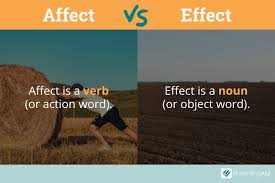Exploring Vertex AI: Revolutionizing Machine Learning in the Cloud
Vertex AI, a comprehensive machine learning platform from Google Cloud, is designed to streamline the process of developing, deploying, and managing machine learning models at scale. By integrating Google’s robust AI tools and services into a unified platform, Vertex AI offers businesses and developers an efficient way to harness the power of artificial intelligence.
What is Vertex AI?
Vertex AI is an end-to-end platform that brings together all the necessary components for building and deploying machine learning models. It combines Google Cloud’s existing ML offerings into a single environment, making it easier for users to manage their projects without needing to switch between different tools.
Key Features of Vertex AI
- Unified Platform: Vertex AI provides a seamless experience by integrating data engineering, model training, evaluation, and deployment into one cohesive platform.
- AutoML: With AutoML capabilities, users can automatically build high-quality models with minimal effort. This feature is particularly beneficial for those who may not have extensive expertise in machine learning.
- Custom Model Training: For advanced users who prefer more control over their models, Vertex AI supports custom model training using popular frameworks like TensorFlow and PyTorch.
- MLOps Tools: The platform includes MLOps tools that help manage the entire lifecycle of ML models. This includes versioning, monitoring, and automation features to ensure smooth operations.
- Pipelines: Vertex AI Pipelines allow users to automate and orchestrate workflows for continuous integration and delivery (CI/CD) of ML applications.
The Benefits of Using Vertex AI
The integration of various tools within Vertex AI simplifies the process of scaling machine learning projects. Here are some notable benefits:
- Simplified Workflow: By providing a unified interface for all stages of ML development, teams can reduce complexity and improve collaboration across projects.
- Scalability: Built on Google Cloud’s infrastructure, Vertex AI can handle large datasets and complex computations efficiently.
- Cost-Effectiveness: The flexibility to choose between AutoML or custom model training allows organizations to optimize costs based on their specific needs.
- Easier Deployment: With built-in deployment capabilities, getting models into production becomes faster and more reliable.
The Future of Machine Learning with Vertex AI
The launch of Vertex AI represents a significant step forward in making machine learning more accessible to businesses across various industries. As organizations increasingly rely on data-driven insights for decision-making, platforms like Vertex AI will play a crucial role in democratizing access to advanced analytics tools.
The future promises further enhancements in terms of ease-of-use and functionality as Google continues to innovate its cloud-based solutions. Whether you’re a seasoned data scientist or new to the field of artificial intelligence, Vertex AI offers powerful resources tailored to meet diverse needs in this rapidly evolving landscape.
7 Advantages of Vertex AI: Streamlined Machine Learning from Development to Deployment
- Unified platform for end-to-end machine learning workflows
- AutoML capabilities for quick model development
- Support for custom model training with popular frameworks
- Integrated MLOps tools for efficient model management
- Automated pipelines for CI/CD of ML applications
- Scalability to handle large datasets and complex computations
- Cost-effective options with flexibility in model training approaches
Navigating Vertex AI: Overcoming the Learning Curve, Cost, and Integration Challenges
Unified platform for end-to-end machine learning workflows
Vertex AI’s unified platform for end-to-end machine learning workflows offers a streamlined and cohesive environment for developing, deploying, and managing machine learning models. By integrating all necessary tools and services into a single interface, it eliminates the need to switch between disparate systems, thereby reducing complexity and enhancing productivity. This integration facilitates seamless collaboration among data scientists, engineers, and other stakeholders, allowing them to focus more on innovation rather than logistical challenges. Additionally, the platform supports every stage of the ML lifecycle—from data preparation and model training to evaluation and deployment—ensuring that teams can efficiently manage their projects from start to finish within a consistent framework. This comprehensive approach not only accelerates time-to-market but also improves the overall quality and reliability of machine learning solutions.
AutoML capabilities for quick model development
Vertex AI’s AutoML capabilities offer a compelling advantage by enabling users to swiftly develop high-quality machine learning models with minimal manual effort. This feature is particularly beneficial for individuals or organizations looking to expedite the model development process without requiring advanced expertise in machine learning. By leveraging AutoML within Vertex AI, users can efficiently generate accurate models, accelerating the pace of innovation and decision-making in various industries.
Support for custom model training with popular frameworks
Vertex AI offers robust support for custom model training, allowing users to leverage popular machine learning frameworks like TensorFlow and PyTorch. This flexibility is particularly advantageous for data scientists and developers who require more control over their model architecture and training processes. By enabling custom model training, Vertex AI allows users to tailor their machine learning solutions to specific business needs or research objectives, ensuring optimal performance and accuracy. Additionally, this feature facilitates the integration of advanced techniques and custom algorithms that might not be possible with out-of-the-box solutions, thereby enhancing the potential for innovation and differentiation in competitive markets.
Integrated MLOps tools for efficient model management
Vertex AI’s integrated MLOps tools provide a comprehensive suite for efficient model management, streamlining the entire machine learning lifecycle. These tools facilitate seamless collaboration between data scientists, engineers, and operations teams by automating key aspects like version control, monitoring, and deployment of models. With built-in capabilities for continuous integration and delivery (CI/CD), Vertex AI ensures that models are consistently updated and maintained with minimal manual intervention. This not only accelerates the deployment process but also enhances the reliability and scalability of machine learning applications, allowing organizations to focus more on innovation and less on operational complexities.
Automated pipelines for CI/CD of ML applications
Automated pipelines for continuous integration and continuous delivery (CI/CD) of machine learning applications are a key advantage of Vertex AI. By incorporating this feature, developers can streamline the process of deploying machine learning models, ensuring efficient and reliable updates throughout the development lifecycle. These automated pipelines not only save time and effort but also enhance the overall productivity of teams by enabling seamless integration of changes, testing, and deployment with minimal manual intervention. With Vertex AI’s automated CI/CD pipelines, organizations can accelerate their ML projects while maintaining a high level of quality and consistency in their applications.
Scalability to handle large datasets and complex computations
One of the standout advantages of Vertex AI is its scalability, which empowers organizations to efficiently handle large datasets and complex computations. Built on Google Cloud’s robust infrastructure, Vertex AI seamlessly scales resources up or down based on the demands of the workload, ensuring optimal performance without unnecessary expenditure. This scalability is particularly beneficial for businesses dealing with vast amounts of data or intricate machine learning models that require significant computational power. By leveraging Vertex AI’s scalable capabilities, companies can process and analyze data at unprecedented speeds, enabling faster insights and more informed decision-making while maintaining flexibility and cost-effectiveness.
Cost-effective options with flexibility in model training approaches
Vertex AI offers cost-effective options by providing flexibility in model training approaches, allowing businesses to optimize their spending based on specific project needs. Users can choose between AutoML for automated model creation, which is ideal for those with limited expertise or resources, and custom model training using popular frameworks like TensorFlow and PyTorch for more complex requirements. This flexibility ensures that organizations can allocate their budgets efficiently, investing in advanced capabilities only when necessary while still benefiting from the powerful infrastructure of Google Cloud. By tailoring the approach to suit different levels of expertise and project demands, Vertex AI helps companies achieve high-quality results without unnecessary expenditure.
Learning Curve
Navigating Vertex AI’s advanced features and customization options can pose a significant challenge for users with limited experience in machine learning. The platform’s steep learning curve may overwhelm beginners, requiring them to invest additional time and effort to grasp its complexities. Without a solid foundation in machine learning concepts, users may struggle to leverage Vertex AI’s full potential effectively. To address this con, providing comprehensive tutorials, user-friendly documentation, and accessible training resources could help bridge the gap and empower users to overcome the initial hurdles of mastering Vertex AI.
Cost
One potential downside of using Vertex AI is the cost associated with deploying complex models or utilizing premium services. While the platform offers flexible pricing based on usage, businesses may find that the expenses can quickly add up, especially when dealing with large-scale projects or advanced features. The need for substantial computational resources and storage can drive costs higher, making it crucial for organizations to carefully monitor and optimize their usage to avoid unexpected expenses. This financial consideration is particularly important for smaller companies or startups operating with limited budgets, as they must balance the benefits of Vertex AI’s capabilities against its potential impact on their bottom line.
Integration Challenges
Integrating Vertex AI into existing workflows and systems can present significant challenges for organizations. As a comprehensive machine learning platform, Vertex AI may necessitate adjustments to current processes and infrastructure to ensure seamless integration. This transition can potentially disrupt ongoing operations, as teams may need to reconfigure data pipelines, update software dependencies, or retrain staff on new tools and methodologies. The complexity of these changes can lead to temporary slowdowns or inefficiencies as organizations work to harmonize their established systems with the new platform. Consequently, careful planning and phased implementation strategies are crucial to minimize disruptions and ensure a smooth transition to Vertex AI.



